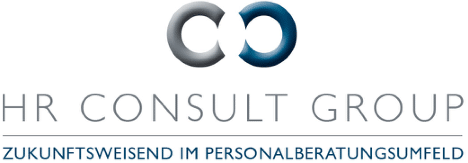Securing specialist and management staff is one of the biggest challenges facing companies of all sizes and in all sectors today. In view of the intense competition for qualified talent, it is no longer enough to recruit good employees - it is crucial to retain them in the long term.
High staff turnover not only causes considerable costs for recruiting and training, but also weakens the team structure and leads to the loss of valuable know-how. This makes it all the more important to take targeted measures to strengthen the motivation and loyalty of the workforce.
Below we show strategies and best practices that companies can use to retain their best talent.
1. career development as a success factor
Employees want to have prospects. Those who recognize that further development and advancement are possible within the company remain motivated and committed.
Best Practices:
-
Clear career paths and development discussions that take individual goals into account.
-
Internal training programs, e-learning courses and targeted training.
-
Mentoring programs that promote knowledge transfer and personal development.
-
Promoting internal applications to retain talent within the company.
Companies that offer continuous development opportunities send a strong signal: "We are investing in you."
2. employee recognition as a cultural principle
Appreciation is a key driver of motivation. Employees whose performance is visibly rewarded identify more strongly with their employer.
Best Practices:
-
Regular, honest feedback from managers.
-
Visible recognition of success - from public praise and awards to small gestures such as personal thanks.
-
Integration of recognition into the corporate culture, not just in the form of monetary bonuses.
A culture of recognition promotes loyalty and creates a positive, productive working environment.
3. corporate culture as a binding force
Corporate culture is the foundation of employee loyalty. It determines how values, cooperation and leadership are practiced on a day-to-day basis.
Best Practices:
-
Promoting transparency and open communication.
-
Involving employees in decision-making processes.
-
Supporting diversity, inclusion and team spirit.
A positive culture ensures that employees stay with the company not only because of their job, but also because of the community.
4. flexibility and work-life balance
Expectations of employers have changed: Flexibility in terms of time and location are now decisive criteria when choosing a job - and for employee retention.
Best Practices:
-
Flexible working time models (flexitime, part-time, 4-day week).
-
Home office and remote work options.
-
Measures to improve the work-life balance, such as childcare facilities.
Companies that allow flexibility show that they take the individual needs of their employees seriously.
5. health and well-being
Healthy employees are not only more productive, but also more loyal. Companies that invest in the well-being of their workforce also strengthen their attractiveness as an employer.
Best Practices:
-
Company health programs, e.g. fitness offers, nutrition courses or preventive measures.
-
Mental health services such as coaching or psychological counseling.
-
Designing ergonomic and inspiring working environments.
A practiced "wellbeing culture" is more than just an additional offer today - it is a decisive factor for employee retention.
Conclusion: Employee retention as a strategic investment
Employee retention is not a one-off project, but a continuous process. Successful companies combine various measures - from career development and recognition to a strong corporate culture, flexibility and health programs.
The result: motivated and loyal employees who stay for the long term, improve their performance and strengthen the employer brand.
Companies that see employee retention as a strategic investment not only secure a competitive advantage, but also create the basis for sustainable success.




